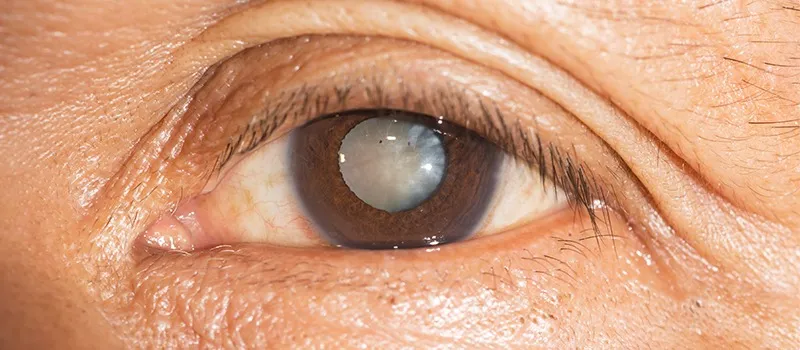
Innovative Technologies in Refractive Correction
Advancements in refractive surgical technology and techniques resulting in the emergence of refractive procedures for patients with myopia, hyperopia, astigmatism, and presbyopia exciting alternatives to traditional spectacles and contact lenses. New methods are being developed to treat eyesight and presbyopia, and modern refractive surgery includes lens-based procedures and laser vision correction (LVC). Improved intraocular lens implant (IOL) technologies that lead to better refractive results and increased independence from spectacles are among the breakthroughs in refractive surgery management. Furthermore, modular IOLs might enable future IOL updates or more flexible vision options. In this blog, we will highlight the broad spectrum of advanced refractive surgical technology for refractive correction where laser treatment has significantly impacted patient care and outcomes.
Types of Surgery for Different Refractive Correction
1. LASIK (Laser in-situ Keratomileusis)
This is a surgery to treat astigmatism, hyperopia, or myopia. Using an excimer laser, the cornea is reshaped during the process. Many earlier refractive eye surgery techniques have been superseded by LASIK. An excimer laser under computer control is used for this procedure. It also makes use of a tiny tool known as a femtosecond laser or microkeratome. The refractive surgeon makes a flap in the cornea’s middle using one of these instruments. The excimer laser is used to remove a thin layer of tissue. The cornea is thus made flat. The flap is swapped out without any sewing. Within minutes, it attaches to the cornea.
An advanced technology for evaluating blurred vision in the eye is wave-front-guided LASIK. The eye can be examined with this technology before surgery. It gauges the amount of distortion that occurs to light as it enters the eye and is reflected. By doing this, an optical map of the eye is produced, highlighting any issues. A LASIK surgeon can perform a more accurate operation by adjusting the laser beam settings thanks to wave-front vision enhancement technologies. This can improve vision and lessen issues with night vision.
2. Photorefractive Keratectomy (PRK)
The aim of photorefractive keratectomy, or PRK, is to treat astigmatism, farsightedness, and nearsightedness by reshaping the cornea using an excimer laser without requiring the creation of a corneal flap. PRK is a surgical procedure that takes five to fifteen minutes to execute for each eye. PRK is usually not painful, though some pressure may be felt throughout the process. The eye is made numb before the surgery using anesthetic drops. The patient is instructed to fixate on a target light while a device holds their eyelid open during the operation. After excising the cornea’s outermost layer, known as the corneal epithelium, the surgeon utilizes an excimer laser to restructure the cornea using computer-controlled light pulses.
3. Radial Keratotomy (RK)
To flatten the cornea, a surgeon performs a refractive keyhole operation (RK). As an excessive curvature of the cornea is generally the cause of myopia, this technique should assist to lessening nearsightedness and astigmatism.
Surgeons frequently operate on one eye using RK before postponing surgery on the other eye for up to six weeks. This pause enables the surgeon to keep an eye on the first eye and document the visual outcome. The surgeon’s technique for operating on the second eye is frequently influenced by the refractive outcome of the first eye’s operation. To provide more equal and consistent vision between the eyes, the patient will be fitted for contact lenses for the uncorrected eye in the interim.
4. Astigmatic Keratotomy (AK)
A surgical procedure known as a limbal relaxing incision, or astigmatic keratotomy (AK), is used to treat astigmatism in the eyes. The cornea’s natural curve is spherical, or basketball-shaped, but astigmatism alters this curvature, giving the cornea an oval or football-shaped shape and misforming its curvature (one end being flat and the other steep). By making one or two incisions at the steepest point of the cornea, AK is a type of corneal relaxing incision surgery that helps correct astigmatism by relaxing the cornea and transforming it into a more rounded shape.
Using a diamond surgical blade, the doctor makes one or two incisions at the steepest point or parallel to the corneal edge while the patient is under topical (anesthetic eye drops) anesthesia.
For improved eyesight, these incisions assist in transforming the cornea’s football-shaped structure into a rounder one.
Typically, the complete process takes no longer than ten minutes for each eye. Even though astigmatism is frequently reduced right after surgery, stability of the effects may not occur for several weeks.
5. Automated Lamellar Keratoplasty (ALK)
An aberrant curvature in the cornea, the transparent front layer of the eye, that keeps light from properly concentrating on the retina, the photosensitive layer at the rear of the eye, and creating a clear image, can be surgically corrected by automated lamellar keratoplasty (ALK). It is recommended for conditions involving aberrant vision, including near- and farsightedness.
Patients are advised to take a break from wearing contact lenses for a while before undergoing ALK. Before the treatment, your cornea’s thickness and visual refractive defects are precisely determined. Local anesthesia is used for ALK procedures. An incomplete flap that is hinged open is created by slicing a layer of the cornea. After that, the underlying cornea is carefully sculpted and incised to correct your eyesight. After that, the flap is sealed and given time to heal naturally. The complete process could take one hour or so. Eye drops are administered to reduce inflammation and soreness while warding against infections. While healing often takes a day or so, clear vision takes several weeks to acquire.
As with any surgery, there is a chance that ALK will result in some consequences. These include infection, glaring of the eyes, scarring, astigmatism (irregular curvature of the cornea), and trouble wearing contact lenses.
6. Laser Thermal Keratoplasty (LTK)
It is a corrective surgical procedure designed to treat farsightedness by reshaping the cornea using a holmium-YAG laser. The objective is to reduce the dependency on corrective lenses, glasses or reading glasses.
This surgery procedure is non-invasive and involves any cutting or tissue removal. Instead, the surgeon utilizes the laser procedure to shrink the collagen fibres which are located on the outer part of the cornea, to steepen it in a controlled manner. This action effectively shifts the focal point of the eye. Because it’s a non-invasive procedure it has minimal risk of complications like infection or vision loss.
However, LTK surgery is not suitable for individuals with refractive instability including those with conditions such as diabetes, lactation, pregnancy, those under age 18 and those using medications such as steroids. Some diseases like rheumatoid arthritis, diabetes, and HIV, which may interfere with wound healing also render individual’s ineligible for LTK. It’s advisable to address these conditions before considering LTK as a treatment option.
7. Small Incision Lenticule Extraction (SMILE)
Ans. SMILE is a single-step, minimally invasive procedure that involves the use of one laser to precisely cut a disc of corneal tissue, which is then removed using a tiny laser incision. Without requiring a cut to the surface of the eye, the entire SMILE treatment is carried out inside the cornea to achieve reshaping. Anesthetic eye drops are used to numb the eye before the surgery. The disc, called a lenticular, is shaped during the process using a laser. The lenticular is then removed using a less than 4mm incision made with the same laser. The femtosecond, or ultra-short pulse, laser used by the SMILE laser doesn’t burn or harm nearby tissue.
The whole SMILE process typically takes 30 seconds, and the incision heals in a few days on its own. SMILE can be used to treat both eyes at once. With SMILE, there is instantaneous final advanced vision correction and a quick recovery with little downtime after the treatment.
Conclusion
E-learning in ophthalmology provides a valuable platform for professionals to stay abreast of the latest advancements in the field of eye care technology. Ophthalmology online courses, offered by esteemed ophthalmologists like Dr. N. Venkatesh Prajna, alongside other online ophthalmology resources, can equip practitioners with the knowledge and skills necessary to deliver exceptional patient care. These platforms provide comprehensive access to up-to-date information on optical innovation diagnostic tools, surgical techniques, and treatment options. By embracing continuous learning through e-learning resources, ophthalmologists can ensure they are providing their patients with the most effective and evidence-based care.
Frequently Asked Questions (FAQs)
Q1. How does refractive cataract surgery last?
Ans. Some persons may experience a recurrence of some blurriness over time. Age-related changes might occasionally cause this, although it can be fixed. Most patients never lose sight of their LASIK results. After ten years, some people might need to have augmentation LASIK surgery.
Q2. What is laser refractive surgery?
Ans. The term “laser refractive eye surgery” describes the application of laser technology to the correction of refractive problems, including astigmatism (uneven focusing), hyperopia (farsightedness), and myopia (nearsightedness).
Q3. What is the recent advanced eye surgery?
Ans. The most advanced laser eye surgery currently offered is Contoura vision LASIK. Sometimes this process is referred to as Topography-guided Custom Ablation Treatment, or T-CAT. The best eye surgeons in the field have refined the LASIK skills they acquired and selected the most effective instruments for the task. What’s left is T-CAT.
Related post












